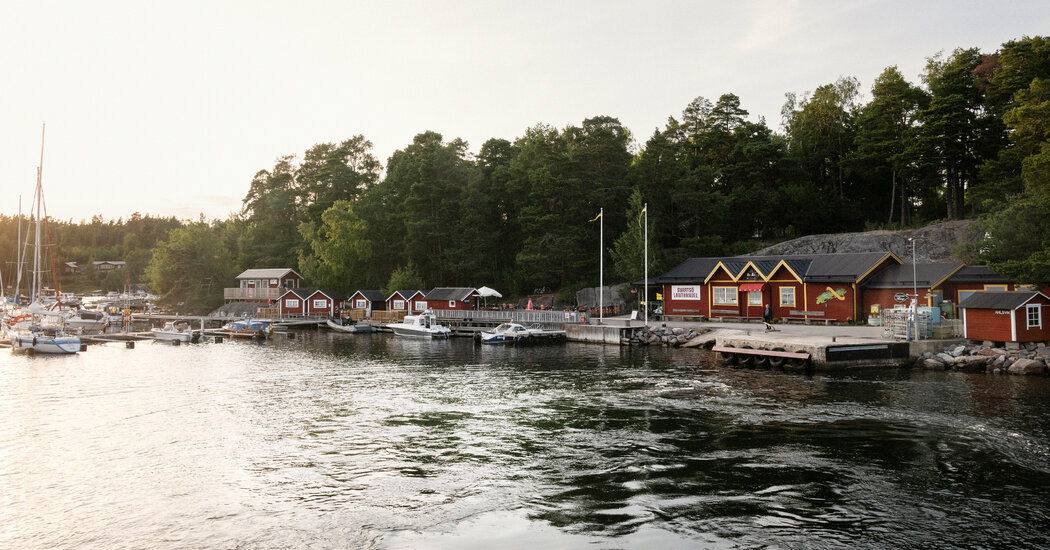The moment the motor turned off, I was hooked.
It was 20 minutes into my first Swedish sailing trip on a blazingly sunny morning in late June. I’d set sail with two friends from their summer house on Kilholmen, a wooded islet in the central archipelago, about an hour by bus (then a five-minute boat ride) from Stockholm. After motoring through a narrow waterway, past smooth, rounded cliffs backed by pine forests and the occasional red timbered cottage, we entered a wide-open bay, steered the bow into the wind and raised the sails. When the puttering motor was cut, it was suddenly quiet, just the wind in my face and the sparkling archipelago all around.
The sheer magnitude of Stockholm’s archipelago is astounding. Shaped like a fan spreading out from the capital into the Baltic Sea, this watery region spans over 650 square miles — more than twice the area of New York City’s five boroughs — with somewhere between 24,000 and 30,000 islands and islets.
“The innermost islands are quite big and populated,” said Jeppe Wikström, a photographer and book publisher who has lived and worked in the archipelago for decades. “The farther out you go, the smaller the islands get, the lower they get. And in the outermost archipelago, there are only low slabs of rock.”
In Swedish, there’s a specific term for each archipelago landmass, from the large islands covered with pine trees and stately 19th-century summer houses to tiny islets with nothing but a few shrubs and lichen.
“I could probably give you 30 different words for an island and most of us would know what the island looks like because of that name,” Mr. Wikström said. “Skär, kobbe, haru, ö — it’s like the Inuits and snow.”
For Swedes, the archipelago is a quintessential summer destination that has often served as the backdrop for movies and television shows, from Ingmar Bergman’s film “Summer with Monika” to Astrid Lindgren’s children’s series “Vi på Saltkråkan” (“Seacrow Island”). But few foreign visitors find their way to these idyllic isles.
“It’s a cliché, the hidden gem, but those are 24,000 hidden gems,” Mr. Wikström said. “It’s jewelry stores of hidden gems.”
Many of those natural treasures are accessible by ferry, bus or car. But the vast majority can be reached only by motorboat or sailboat, which one can rent with or without a skipper.
For me, the decision whether to travel by engine or sail was easy.
“This is probably the most extraordinary…
Click Here to Read the Full Original Article at NYT > Travel…
